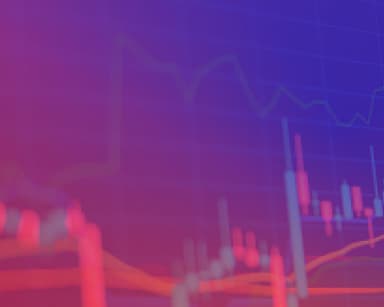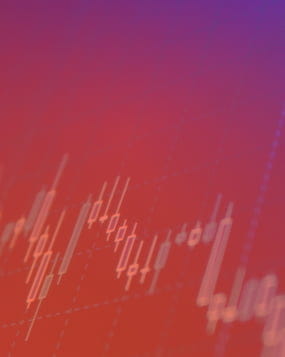Reviewed by Patrick Foot, Senior Financial Writer.
What is ETF trading?
ETF trading is the act of speculating on an exchange traded fund, an instrument that tracks a basket of underlying assets – whether that’s shares, commodities or currencies.
When you buy a share of an ETF, you’ll be getting exposure to a wide range of assets from one single position – either physical assets or instruments that mimic the returns of a market. When you trade an ETF, you’ll get the same exposure but without owning the shares – you’re simply placing a bet on whether the price of an ETF will rise or fall in value.
How does ETF trading work?
ETFs trading works by tracking the price of an ETF, which in itself will replicate the returns of the underlying asset (or assets) they contain. Like shares, ETFs are bought and sold on stock exchanges – this means the price of an ETF fluctuates throughout the day.
How to trade ETFs
You can speculate on the price of ETFs, whether they’re rising or falling, using CFDs and spread bets. To start trading ETFs, follow these easy steps:
- Learn how to use spread bets and trade CFDs
Find out how spread bets and CFDs work and the benefits of trading derivatives - Create an account with City Index
Get started trading on live markets, or practise trading first in a risk-free demo account - Search for the ETF you want to trade
Decide which ETF you’re interested in and find it in our award-winning platform - Decide whether you want to go long or short
Click ‘buy’ if you think the market will rise in price, and ‘sell’ if you think it will fall - Open your position
Enter the market by clicking ‘place a trade’, you may want to consider adding a stop loss to your trade to manage your risk - Monitor and close your trade
Use analysis to stay up to date with any price movements and identify an exit point for your position
If you choose to trade ETFs via derivatives, spread bets are completely tax free, while CFDs are free from stamp duty.*
Types of ETFs
An ETF can be structured so that it tracks an entire index, sector, basket of currencies, or investment strategy. Your choice of ETF will depend on your interests, trading plan and available capital.
Stock index ETFs
A stock index ETF tracks the performance of an index. Indices aren’t typical assets – they’re just a calculation that tells you how a group of stocks are performing. An index ETF typically buys the shares of all the companies on the index in question, giving you exposure to the entire index at once.
For example, an S&P 500 ETF would track the performance of the index by holding shares of all the constituents. Or sometimes, by owning products that mimic the S&P 500’s movements.
Find out more about indices
Sector ETFs
A sector ETF tracks a group of companies within the same industry, such as technology, banking, or energy. For example, the VanEck Vectors Gold Miners UCITS ETF enables you to invest in the world’s largest gold and silver miners.
Sector ETFs give investors and traders exposure to an entire section of the economy from just a single position, which can be useful both in terms of speculation and hedging against existing exposures.
Learn about UK Sector Indices trading
Currency ETFs
A currency ETF invests in foreign currencies, providing exposure to the market without having to buy or sell specific forex pairs. Most currency ETFs track a basket of currencies, enabling you to trade multiple exchange rates from just one position.
Currency ETFs can also be a great way to speculate on the health of the global economy, as you’ll be looking at the currencies of multiple countries, not just one. This does mean that the risks associated with currency ETFs are greater, as there are a larger number of variables involved.
Discover how to trade forex
Commodity ETFs
Commodity ETFs usually hold a physical commodity in storage or are invested in futures contracts. They can hold a range of commodities, including agricultural goods, precious metals, energies and natural resources.
These ETFs are particularly popular among less-experienced traders as they provide the opportunity to trade commodities without having to learn the intricacies of futures contracts.
Commodity ETFs can also refer to commodity index ETFs or sector ETFs, which track companies within the supply chain.
Learn how to trade commodities
Short ETFs
Short ETFs, also known as inverse ETFs, generate profit when the underlying asset falls in price.
You’d buy shares in an inverse ETF if you expected the price of a market – normally an index or group of shares – to decline and want to take advantage of that movement. It’s the same investment strategy as shorting a stock.
Leveraged ETFs
A leveraged ETF uses derivatives to magnify the returns of the underlying asset – usually an index. Normally, an ETF will invest in the underlying in a way that mimics the exact returns of the market, on a 1:1 basis. A leveraged ETF would aim to generate a higher ratio of returns, such as 2:1 or 3:1.
As with any leveraged product, there is the potential for greater profits but also greater losses. This makes it important to have a suitable risk management strategy in place. For traders, this can include stop-losses and limit orders.
Find out more about leverage
Top ETFs to trade
Here are our most popular ETFs by volume of trade (trade count):
- ProShares Ultra VIX ST – this ETF provides leveraged exposure to the S&P 500 VIX short-term futures index, which profits when there’s an increase in the expected volatility of the S&P 500. It seeks a return that is 1.5x the return of its underlying benchmark for a single day
- ARKK - ARK Innovation ETF – ARKK invests in ‘disruptive innovation’. All the companies included in the ETF rely on or benefit from the development of new products, services, technological improvements and scientific research. It is an actively managed ETF
- ProShares VIX ST – the non-leveraged ProShares VIX ST provides standard long exposure to the S&P 500 VIX short-term futures index; it profits when there’s an increase in the expected volatility of the S&P 500
- Global X Lithium ETF – this ETF invests in the full lithium cycle, from the mining and refining process through to battery production. It seeks to track the price and yield performance of the Solactive Global Lithium Index, before fees and expenses
- VanEck Vectors Gold Miners – this ETF aims to replicate the price and yield performance of the NYSEA Arca Gold Miners Index. The fund invests in common stocks and depositary receipts of companies involved in the industry, based on the companies on the market-capitalisation weighted index



